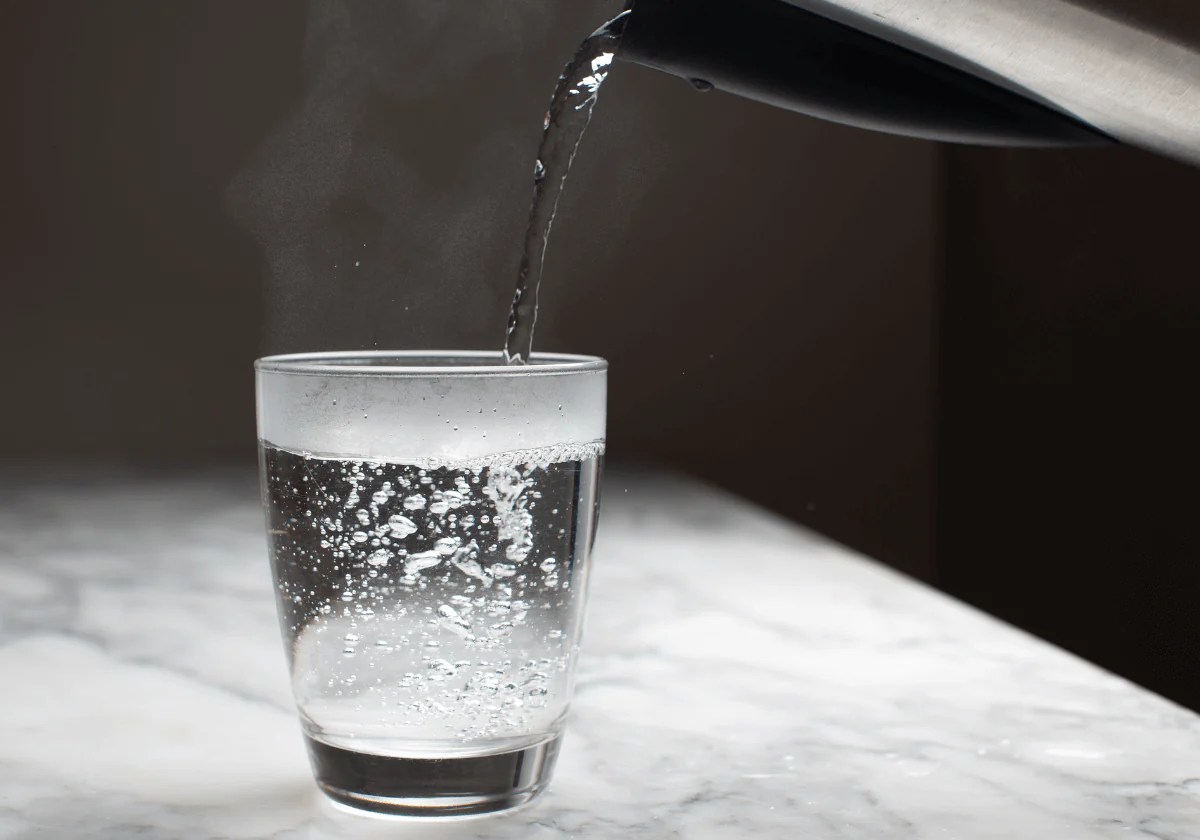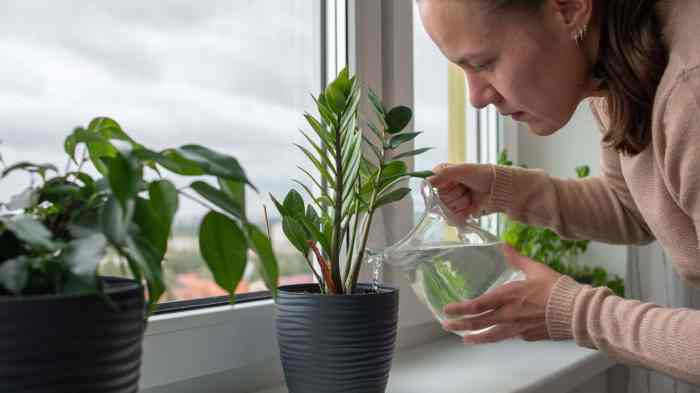Is Cold Water Bad for Plants?
Effects of Cold Water on Plant Cells
Is cold water bad for plants – Exposure to cold water significantly impacts plant cells, triggering various physiological changes that can affect overall plant health and growth. Understanding these cellular responses is crucial for optimizing irrigation practices and ensuring plant resilience in cold environments.
Physiological Changes in Plant Cells Exposed to Cold Water
Cold water exposure leads to a decrease in cellular metabolic activity. Enzyme activity slows down, reducing the rate of vital processes like photosynthesis and respiration. This slowdown is largely due to the decreased fluidity of cell membranes at low temperatures.
Impact of Cold Water on Cell Membranes and Permeability
Plant cell membranes, primarily composed of lipids, become less fluid in cold conditions. This reduced fluidity can affect the permeability of the membranes, hindering the transport of water, nutrients, and other essential molecules into and out of the cells. Increased membrane rigidity can also lead to membrane damage.
Responses of Different Plant Species to Cold Water Stress
Different plant species exhibit varying degrees of tolerance to cold water stress. Some species, particularly those adapted to cold climates, possess mechanisms that protect their cells from cold-induced damage. These adaptations may include the production of antifreeze proteins or the alteration of membrane lipid composition. Conversely, tropical or subtropical plants are more susceptible to cold water damage.
Role of Aquaporins in Regulating Water Uptake in Cold Conditions
Aquaporins, membrane proteins that facilitate water transport across cell membranes, play a crucial role in regulating water uptake under cold conditions. Their activity can be affected by temperature, with lower temperatures potentially reducing their efficiency. However, some plants may upregulate aquaporin expression in response to cold stress to maintain water uptake.
Comparative Effects of Cold Water on Different Plant Tissues
The impact of cold water varies depending on the plant tissue. Roots, leaves, and stems exhibit different sensitivities to cold stress due to their unique structures and functions.
| Tissue | Effect of Cold Water on Cell Membranes | Impact on Water Uptake | Overall Sensitivity |
|---|---|---|---|
| Roots | Increased membrane rigidity, reduced permeability | Reduced water absorption from cold soil | High |
| Leaves | Increased membrane rigidity, potential for damage | Reduced transpiration, wilting | Medium |
| Stems | Moderate effects, reduced water transport | Slower water transport to leaves | Low |
Water Uptake and Transportation in Cold Environments: Is Cold Water Bad For Plants
The efficiency of water uptake and transport in plants is significantly influenced by environmental temperature. Cold temperatures present unique challenges to plants, necessitating adaptations for survival.
Mechanisms of Water Absorption from Cold Soil
Plants utilize various mechanisms to absorb water from cold soil. These include adjustments in root morphology (e.g., increased root hair density), increased production of cryoprotective substances, and modifications in the activity of membrane transport proteins like aquaporins.
Effects of Cold Temperatures on Transpiration Rate
Cold temperatures generally reduce the rate of transpiration due to lower rates of evaporation. However, extremely low temperatures can also damage leaf stomata, potentially leading to further reductions in transpiration and increased risk of desiccation.
Adaptations for Efficient Water Uptake in Cold Climates
Plants adapted to cold climates have evolved various strategies to optimize water uptake. These adaptations include specialized root systems for accessing deeper soil layers where temperatures are more moderate, enhanced water storage capacity, and altered stomatal behavior to regulate water loss.
Challenges in Water Transport at Low Temperatures, Is cold water bad for plants
The viscosity of water increases at low temperatures, making it more difficult for plants to transport water through their vascular systems. Ice formation within plant tissues can also disrupt water transport and cause damage to cells.
Illustration of Water Uptake and Transport in Cold Conditions
Imagine a plant with roots extending into cold, damp soil. Water molecules, slowed by the cold, are absorbed by root hairs. Aquaporins in the root cell membranes facilitate water uptake. The water then travels through the xylem vessels, a network of tubes, up the stem to the leaves. The rate of this upward movement is slower than in warmer conditions due to increased water viscosity.
However, the plant’s cold-adapted physiology ensures that some water transport continues, even in sub-optimal temperatures.
Cold Water and Plant Growth
Water temperature plays a critical role in plant growth and development. Cold water can significantly impact various aspects of plant growth, from seed germination to overall biomass production.
Relationship Between Water Temperature and Plant Growth Rates
Generally, plant growth rates are optimal within a specific temperature range. Cold water temperatures below this optimum can slow down growth rates, while extremely cold temperatures can cause severe damage or even death. The ideal temperature varies significantly depending on the plant species.
Impact of Cold Water on Seed Germination
Cold water can inhibit seed germination in many plant species. Low temperatures can slow down or prevent metabolic processes necessary for seed imbibition and radicle emergence. However, some species have evolved mechanisms to tolerate or even require cold temperatures for germination (vernalization).
Growth Patterns of Plants Watered with Cold vs. Room-Temperature Water

Source: shopify.com
Studies have shown that plants watered with cold water often exhibit slower growth rates, reduced biomass, and delayed flowering compared to plants watered with room-temperature water. The magnitude of this difference depends on the plant species, the severity of the cold, and the duration of exposure.
Effects of Cold Water on Photosynthesis and Respiration
Cold water can negatively impact both photosynthesis and respiration. Low temperatures reduce enzyme activity, affecting the rate of these crucial metabolic processes. Reduced photosynthesis limits carbohydrate production, while impaired respiration hinders energy generation.
Observable Effects of Cold Water on Plant Growth
The effects of cold water on plant growth can range from subtle to severe, depending on factors such as the plant species, the degree of cold stress, and the duration of exposure. Here are some observable effects:
- Stunted growth
- Delayed flowering
- Reduced biomass
- Chlorosis (yellowing of leaves)
- Wilting
- Leaf abscission (leaf drop)
- Plant death
Cold Water and Plant Health
Cold water irrigation can compromise plant health in several ways, increasing susceptibility to diseases and nutrient deficiencies. Understanding these risks is essential for implementing appropriate irrigation strategies.
Susceptibility to Diseases When Exposed to Cold Water
Cold water stress can weaken plants, making them more vulnerable to various diseases. Cold temperatures can reduce the plant’s ability to defend against pathogens, leading to increased infection rates.
Nutrient Deficiencies Exacerbated by Cold Water Irrigation
Cold water can reduce the uptake of essential nutrients from the soil. Low temperatures can hinder the activity of root transporters responsible for nutrient absorption, leading to deficiencies that can negatively impact plant growth and development.
Role of Cold Shock Proteins in Protecting Plants from Cold Stress
Cold shock proteins (CSPs) are a group of proteins that are produced by plants in response to cold stress. These proteins play a crucial role in protecting cellular components from cold-induced damage, helping to maintain cellular function and prevent cell death.
Impact of Cold Water on Plants Grown in Different Soil Types
The impact of cold water can vary depending on the soil type. Well-drained soils may offer some protection against cold damage by allowing for better aeration and reducing the risk of root chilling. Conversely, poorly drained soils can exacerbate the negative effects of cold water by increasing the risk of root hypoxia (oxygen deficiency).
Symptoms of Cold Stress in Plants
Symptoms of cold stress in plants vary depending on the severity of the stress. Early symptoms might be subtle, while severe cold stress can lead to irreversible damage.
| Severity | Leaf Symptoms | Stem Symptoms | Root Symptoms |
|---|---|---|---|
| Mild | Slight wilting, discoloration | No visible symptoms | Reduced water uptake |
| Moderate | Wilting, chlorosis, leaf curling | Slight discoloration | Slowed growth |
| Severe | Necrosis (tissue death), leaf abscission | Discoloration, lesions | Root rot |
Practical Implications of Cold Water Irrigation
Using cold water for irrigation requires careful consideration of the potential benefits and drawbacks. Appropriate water temperatures should be determined for each plant species to minimize negative effects and optimize growth.
Guidelines for Determining Appropriate Water Temperatures
The ideal water temperature for irrigation varies greatly depending on the plant species and its growth stage. Research on specific plant species is crucial for determining optimal temperature ranges. Generally, it’s advisable to avoid using water significantly colder than the ambient air temperature.
Best Practices for Watering Plants in Cold Climates
In cold climates, consider using methods that minimize exposure to extremely cold water. These methods include using insulated water pipes, pre-warming irrigation water, and avoiding irrigation during periods of freezing temperatures.
Potential Benefits and Drawbacks of Using Cold Water for Irrigation
Cold water irrigation might offer some benefits in specific situations, such as reducing the risk of disease transmission through warmer water. However, the drawbacks, including reduced growth and increased susceptibility to cold stress, usually outweigh the benefits.
Mitigation of Negative Effects of Cold Water on Plant Health

Source: gardengeo.com
While generally, using cold water for plants isn’t detrimental, the frequency of watering is more crucial. For instance, understanding how often do you water a zz plant directly impacts its health; overwatering, regardless of water temperature, is far more damaging than slightly cooler water. Therefore, appropriate watering schedules are key to a thriving plant, irrespective of the water’s temperature.
Mitigation strategies include gradual acclimatization of plants to colder temperatures, using soil mulches to insulate roots, and applying protective coatings to plants.
Adjusting Irrigation Systems to Prevent Cold Water Damage
To prevent cold water damage, inspect irrigation systems for leaks or malfunctioning components that could lead to prolonged exposure to cold water. Consider installing water heaters or using methods to pre-warm irrigation water, especially during colder periods.
FAQ Explained
Can I use ice water on my plants?
Generally, no. Ice water can shock plants, potentially damaging their cells and hindering growth.
What is the ideal water temperature for watering plants?
Room temperature water (around 65-75°F or 18-24°C) is generally best. Avoid extremes of hot or cold.
How can I tell if my plants are suffering from cold water stress?
Symptoms can include wilting, stunted growth, discoloration of leaves, and increased susceptibility to disease.
Are all plants equally sensitive to cold water?
No, some plants are more tolerant of cold water than others. Tropical plants, for example, are particularly sensitive.




















